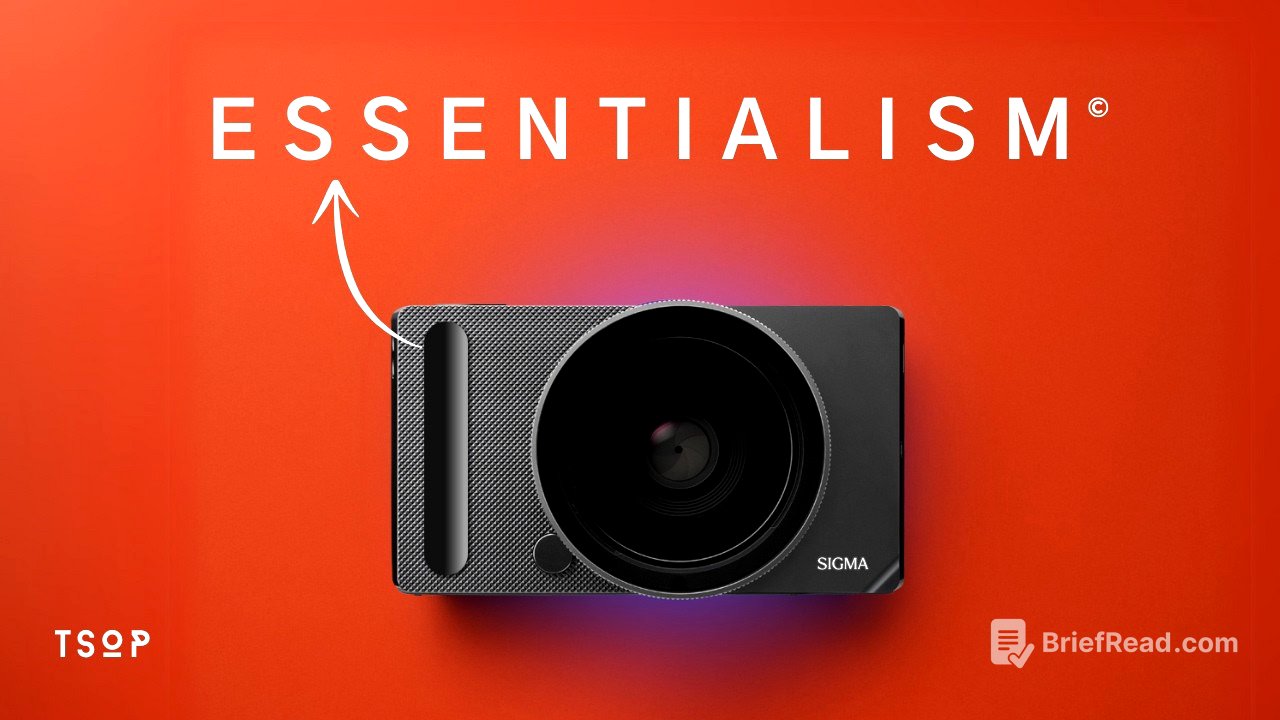TLDR;
The video discusses the design philosophies of minimalism and essentialism, arguing that while minimalism focuses on visual simplicity, it often leads to the removal of essential functionalities. Essentialism, on the other hand, prioritizes identifying and retaining the core purpose of a product, ensuring every element has a clear reason to exist. The video uses examples like the Sigma BF camera, Apple's Magic Mouse, and modern appliances to illustrate how minimalism can result in products that are aesthetically pleasing but lack usability. It advocates for an essentialist approach, where design starts with understanding user needs and incorporating necessary features for a seamless and intuitive experience.
- Minimalism focuses on visual simplicity but often sacrifices functionality.
- Essentialism prioritizes the core purpose of a product and ensures every element has a clear reason to exist.
- Redesigning products should start from scratch, focusing on user needs and rethinking the entire experience.
What Essentialism Means (Life vs Design) [0:00]
The video introduces the concept of essentialism as a superior design philosophy compared to minimalism. Minimalism, while visually appealing, often results in products that lack essential features and usability, such as the Sigma BF camera with its clean design but lack of grip and controls. Essentialism, popularized by Greg McKeown's book, focuses on identifying what truly matters, exploring options, eliminating non-essential elements, and executing with discipline. This philosophy can be applied to product design by defining the core purpose, exploring user needs, removing unnecessary features, and ensuring the remaining elements are seamless and intuitive.
When Minimalism Starts to Fail [3:08]
Minimalism, originating from art and architecture, emphasizes visual simplicity, but its application in product design often leads to the removal of essential functions. Designers sometimes prioritize aesthetics over functionality, resulting in products that look modern but are difficult to use. Examples include thermostats with unclear controls, kitchen appliances with flat touch interfaces that are hard to operate, and tech products that remove essential ports. This approach increases cognitive load, as users must learn complex interactions for simple tasks, leading to the need for tutorials and longer manuals. The key takeaway is that products should not sacrifice functionality for the sake of a minimal aesthetic.
Redesigning with Essentialism [7:00]
To address the shortcomings of minimalist design, the video suggests redesigning products from scratch, focusing on user needs and essentialism. As an example, the Sigma BF camera is redesigned using essentialist principles. The core purpose of the camera is defined as capturing high-quality images effortlessly, anytime, anywhere. The redesign incorporates features that support this purpose, such as a natural grip for one-handed use, quick access controls for exposure and focus, and a screen that works in sunlight. Unnecessary elements are eliminated, while essential features like a front grip, a toggle switch for photo and video modes, and a control wheel for shortcuts are added. The result is a camera that is not only visually appealing but also highly usable and intuitive.


![[HEADLINE NEWS 19/08] Kepadatan Laliln di Jalan TB Simatupang](https://wm-img.halpindev.com/p-briefread_c-10_b-10/urlb/aHR0cDovL2ltZy55b3V0dWJlLmNvbS92aS9yUkRsNXBmUjJQcy9ocWRlZmF1bHQuanBn.jpg)






